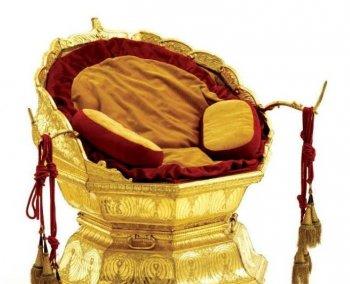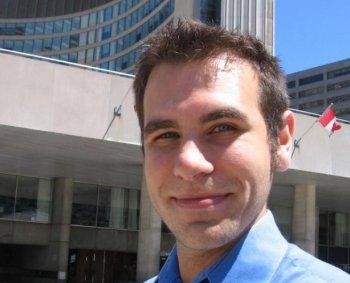The Warrior Emperor and China’s Terracotta Army, which premiered at the Royal Ontario Museum on June 26, showcases one of the most significant archaeological finds in history.
In 1974 in Shaanxi province in north-central China, thousands of life-sized terracotta sculptures of Chinese warriors were discovered in the elaborate underground tomb complex of China’s First Emperor. The figures were created 2,200 years ago, during the Qin Dynasty.
The exhibition consists of 250 artifacts, dating mostly to the first millennium BC. It includes 10 life-sized complete terracotta sculptures, comprising eight human figures and two life-sized horses.
Some of the artifacts have never left China or been on display before, even in their country of origin.
“The Foundation believes that this exhibition will promote a deeper understanding and appreciation of ancient Chinese civilization. It is a fine example of important cross-cultural exchange between museums in China and Canada,” Robert H. N. Ho said in a press release.
Ho is the founder of the Robert H. N. Ho Family Foundation, which is presenting the exhibition.
Planned more than a year ago, it was a coincidence that the exhibition’s opening day occurred during the G20 Summit. A Toronto newspaper reported that Chinese leader Hu Jintao, who was visiting Toronto for the summit, was invited to the opening but did not attend.
Though other museums and tourist attractions were closed due to fear of violent protests related to the G20, the ROM decided to stay open and premiere the exhibition on Saturday. However, attendance was lower than usual, and by Saturday afternoon the police asked the museum to close early in case of outbreaks of violence.
The terracotta army was discovered by a farmer in North-Central China in 1974. While digging a well, the farmer found life-sized warriors made out of terracotta buried underground. At first the villagers were afraid and tried to destroy the figures, thinking it would bring bad luck to the village.
The site is now home to China’s first and largest archaeological museum, sometimes referenced to as the eighth wonder of the world. It was added to the official list of World Heritage sites by UNESCO in 1987.
Since the discovery, more than 2,000 life-sized warriors have been unearthed, as well as figures of civil officials, performers, and animals, all made from terracotta. It is believed that the warriors held real weapons to protect the king in his afterlife. However, the weapons were stolen by tomb robbers or destroyed in a fire.
It is notable that each of the 2,000 warriors have distinct individual features. The soldiers of the same rank wear the same hair styles, although there are slight differences in the twists of the knots and the ribbons used. Though the sculptures are life-like, there are no scars or deformities. It is not known if the figures represent actual soldiers or were created as an army to protect the king in his afterlife.
The Qin dynasty is an important period in China’s history. The famous Great Wall of China was constructed during this period. The first emperor, Qin Shihuangdi, unified China and the entire country started using the same coinage. The script during this period evolved into the modern Chinese script used today in China. The first emperor also standardized the weight and measurements now used in trade.
The part of the tomb complex unearthed so far depicts an imperial palace capital and its surrounding territory, which includes government departments, parade grounds, stables, an armoury, a menagerie, and pleasure gardens, all buried underground for the king’s afterlife.
In ancient China, a king began building his tomb complex just after he ascended to power. The first emperor was crowned at age 13 and governed the country until his death at 50, so he had lots of time to prepare for his afterlife—which may explain his vast tomb complex. Thousands of full-sized figures have yet to be excavated.
The Warrior Emperor and China’s Terracotta Army will remain at the ROM’s Garfield Weston Exhibition Hall until January 2, 2011. After that it will travel to the Montreal Museum of Fine Arts, Calgary’s Glenbow Museum, and Victoria’s Royal BC Museum.
In 1974 in Shaanxi province in north-central China, thousands of life-sized terracotta sculptures of Chinese warriors were discovered in the elaborate underground tomb complex of China’s First Emperor. The figures were created 2,200 years ago, during the Qin Dynasty.
The exhibition consists of 250 artifacts, dating mostly to the first millennium BC. It includes 10 life-sized complete terracotta sculptures, comprising eight human figures and two life-sized horses.
Some of the artifacts have never left China or been on display before, even in their country of origin.
“The Foundation believes that this exhibition will promote a deeper understanding and appreciation of ancient Chinese civilization. It is a fine example of important cross-cultural exchange between museums in China and Canada,” Robert H. N. Ho said in a press release.
Ho is the founder of the Robert H. N. Ho Family Foundation, which is presenting the exhibition.
Planned more than a year ago, it was a coincidence that the exhibition’s opening day occurred during the G20 Summit. A Toronto newspaper reported that Chinese leader Hu Jintao, who was visiting Toronto for the summit, was invited to the opening but did not attend.
Though other museums and tourist attractions were closed due to fear of violent protests related to the G20, the ROM decided to stay open and premiere the exhibition on Saturday. However, attendance was lower than usual, and by Saturday afternoon the police asked the museum to close early in case of outbreaks of violence.
The terracotta army was discovered by a farmer in North-Central China in 1974. While digging a well, the farmer found life-sized warriors made out of terracotta buried underground. At first the villagers were afraid and tried to destroy the figures, thinking it would bring bad luck to the village.
The site is now home to China’s first and largest archaeological museum, sometimes referenced to as the eighth wonder of the world. It was added to the official list of World Heritage sites by UNESCO in 1987.
Since the discovery, more than 2,000 life-sized warriors have been unearthed, as well as figures of civil officials, performers, and animals, all made from terracotta. It is believed that the warriors held real weapons to protect the king in his afterlife. However, the weapons were stolen by tomb robbers or destroyed in a fire.
It is notable that each of the 2,000 warriors have distinct individual features. The soldiers of the same rank wear the same hair styles, although there are slight differences in the twists of the knots and the ribbons used. Though the sculptures are life-like, there are no scars or deformities. It is not known if the figures represent actual soldiers or were created as an army to protect the king in his afterlife.
The Qin dynasty is an important period in China’s history. The famous Great Wall of China was constructed during this period. The first emperor, Qin Shihuangdi, unified China and the entire country started using the same coinage. The script during this period evolved into the modern Chinese script used today in China. The first emperor also standardized the weight and measurements now used in trade.
The part of the tomb complex unearthed so far depicts an imperial palace capital and its surrounding territory, which includes government departments, parade grounds, stables, an armoury, a menagerie, and pleasure gardens, all buried underground for the king’s afterlife.
In ancient China, a king began building his tomb complex just after he ascended to power. The first emperor was crowned at age 13 and governed the country until his death at 50, so he had lots of time to prepare for his afterlife—which may explain his vast tomb complex. Thousands of full-sized figures have yet to be excavated.
The Warrior Emperor and China’s Terracotta Army will remain at the ROM’s Garfield Weston Exhibition Hall until January 2, 2011. After that it will travel to the Montreal Museum of Fine Arts, Calgary’s Glenbow Museum, and Victoria’s Royal BC Museum.




